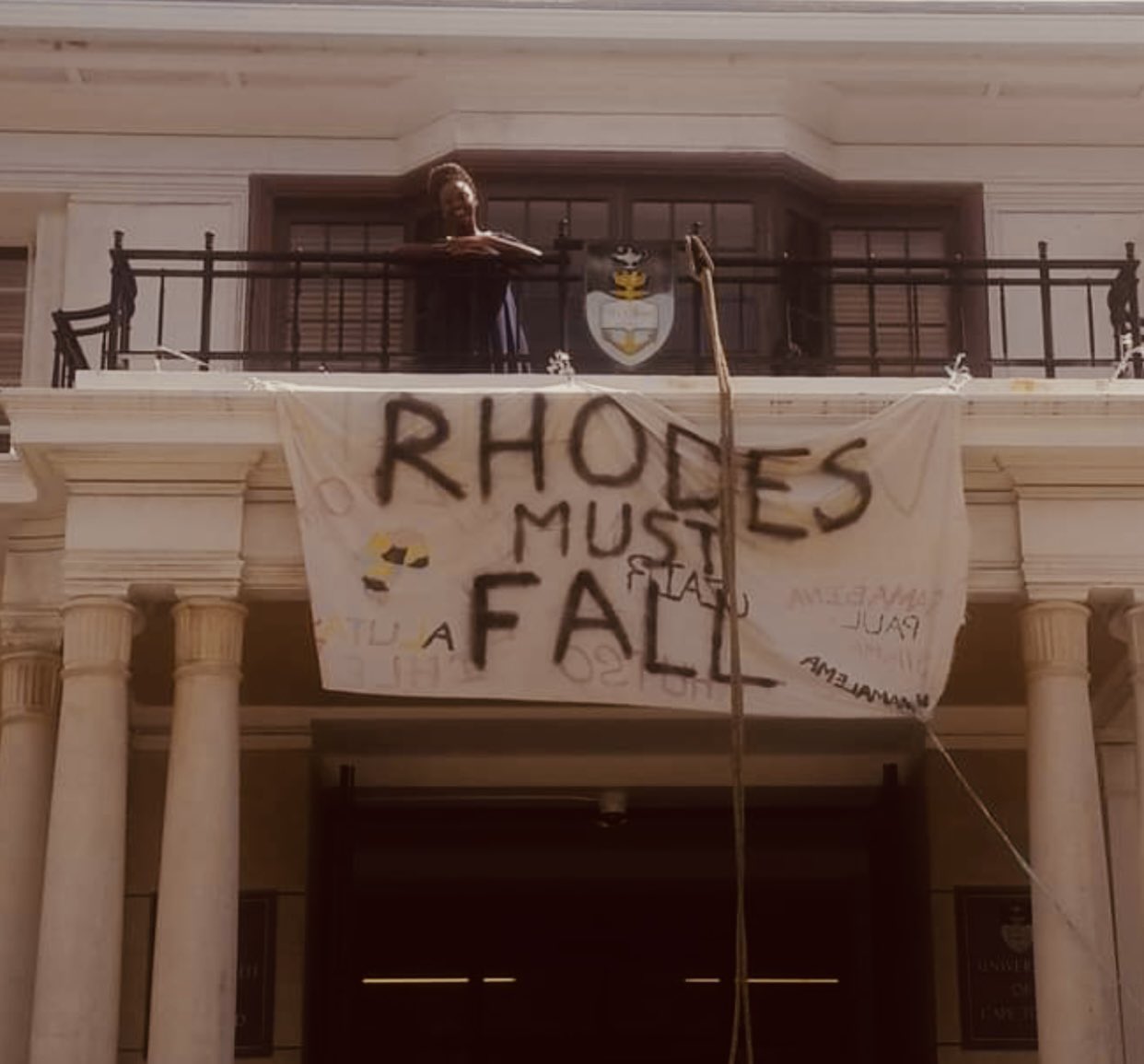As the University of Cape Town (UCT) commemorates the 10th anniversary of the Rhodes Must Fall student movement, the occasion has sparked deep reflection on its lasting impact on South African higher education and social consciousness. The movement, which began in March 2015, has been described by former UCT Vice-Chancellor Professor Mamokgethi Phakeng as one of the most pivotal youth-led uprisings since 1976.
The protest began when UCT student Chumani Maxwele hurled a bucket of human waste at the statue of Cecil John Rhodes, located on the university’s upper campus. His dramatic act was meant to challenge the presence of colonial symbols in post-apartheid South Africa and to protest the slow pace of transformation at the university. That moment lit a spark that would grow into a national and even global movement.
Rhodes Must Fall
The Rhodes Must Fall protests highlighted broader frustrations regarding institutional racism, inequality, and lack of representation for Black students in the academic space. It was not just about a statue, but what the statue represented—a legacy of colonialism, white supremacy, and systemic exclusion.
Within weeks, the movement gained momentum, with daily protests, public debates, and media coverage dominating national conversation. After about a month of student-led demonstrations, the university’s Senate and Council agreed to remove the statue on 9 April 2015. The image of Rhodes being airlifted off its pedestal was symbolic—it marked a physical and ideological shift in post-apartheid South Africa.
The ripple effects were immediate. The Rhodes Must Fall movement inspired similar campaigns across the country and internationally. Most notably, it gave birth to the Fees Must Fall movement later in 2015, which demanded the decolonisation of education and free tertiary education for all. Students across universities such as Wits, Stellenbosch, and the University of Pretoria echoed UCT’s calls for change, catalyzing a wave of protests that reshaped the national discourse on access and equity in higher learning.
Reflecting on the significance of the movement, Professor Mamokgethi Phakeng said the protest action had parallels with the historic 1976 Soweto Uprising, where students rose against the oppressive apartheid education system.
“These student movements not only triggered vital national conversations but also resonated globally, sparking similar movements in institutions like Oxford University in the UK,” Phakeng noted.
During her time at UCT, Phakeng launched initiatives such as the #RhodesMustFall Annual Lecture and the #RhodesMustFall Scholarship Fund. These efforts aimed to ensure that the legacy of the student movement would continue beyond protest, through intellectual engagement and academic inquiry.
“The goal,” she explained, “was to create a space where people could critically engage with the issues raised by the students—not just through protests, but through research, discussion, and reflection. Shouting across picket lines wasn’t getting us anywhere. We needed to find a way back to each other.”
The scholarship supports postgraduate students researching themes related to transformation, protest, identity, and institutional reform. According to Phakeng, it offers a platform for young scholars to continue the work of the movement in a constructive and scholarly way.
Wednesday’s commemoration at UCT included panel discussions, exhibitions, and a reflective ceremony at the site where the Rhodes statue once stood. Students, staff, and alumni gathered to honor the courage and vision of those who participated in the 2015 protests.
“The 10-year anniversary is not just a look back,” Phakeng emphasized. “It’s a reminder of how powerful young voices are. The movement birthed future leaders, reshaped ideas, and showed us that change—while uncomfortable—is necessary.”
As the country continues to grapple with the challenges of inequality and transformation, the Rhodes Must Fall movement stands as a powerful chapter in the ongoing story of South Africa’s journey toward justice and inclusion.

